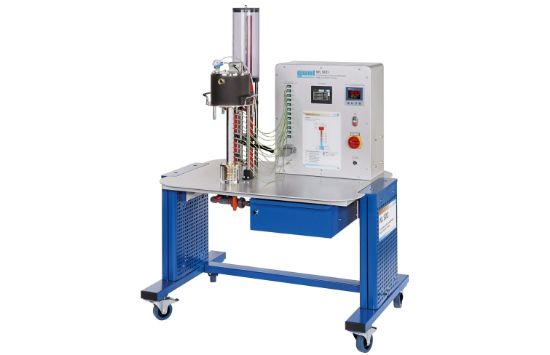GUNT Heat conduction is the transfer of thermal energy through solid, liquid, or gaseous media due to temperature differences. Steady-state heat conduction refers to continuous and uniform heat flow, while transient (non-steady-state) conduction involves time- and location-dependent temperature variations. This GUNT experimental unit enables students to explore both phenomena using real-time measurements on metal cylinders.
Product Features
- Investigates both steady-state and transient heat conduction through metal cylinders
- Uses cylindrical samples of various metals placed between a heat source and a heat sink
- Each metal sample includes 12 core-integrated temperature measurement points
- Electrically heated water circuit provides a consistent heat source with precise electronic temperature control
- Water-cooled heat sink ensures stable and reproducible cooling conditions via elevated tank system
- Software-controlled temperature jump for transient heat flow analysis
- Digital display of sample temperatures, heating power, and water flow rates on the unit cabinet
- Real-time data transmission to PC via USB for visualization and evaluation
- Includes GUNT educational software with theory explanations, illustrations, and automatic thermal conductivity calculation
Benefits
- Comprehensive analysis of heat flow dynamics under steady and transient conditions
- Enhanced understanding of thermal conductivity across different metal types
- Hands-on experiments with clear, measurable results ideal for lab teaching
- Digital interface and automated data acquisition improve experiment accuracy
- Educational software links practical learning with theoretical concepts
Why Choose the GUNT Heat Conduction Experiment?
This GUNT experiment unit is purpose-built for academic labs teaching thermal transfer. By allowing observation of both constant and dynamic heat conduction, students gain essential insight into how heat behaves under various material and flow conditions. It’s ideal for courses in mechanical engineering, thermodynamics, and materials science.

